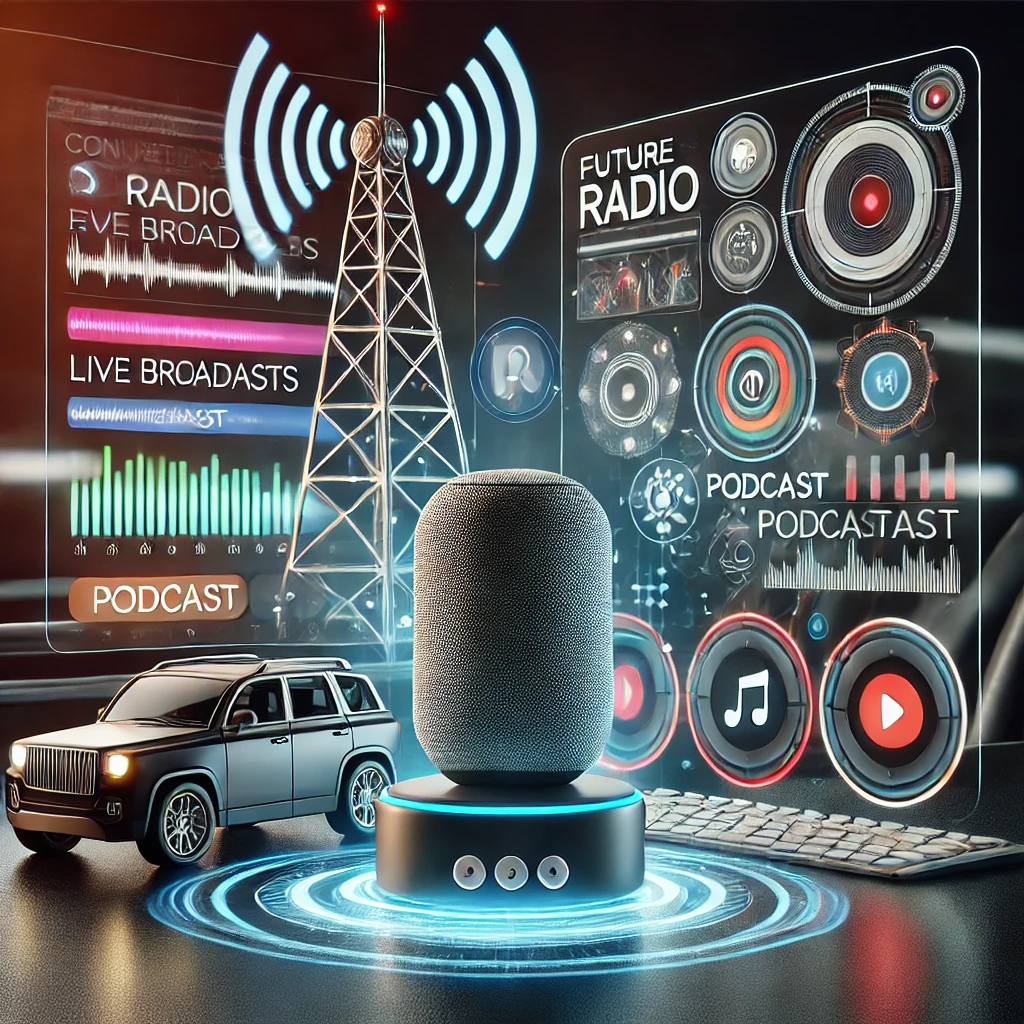The future of radio in the U.S. is evolving as the industry adapts to changing technologies, audience preferences, and market trends. While traditional AM/FM radio still holds a significant place in the media landscape, several key factors are shaping its future:

1. Shift to Digital Platforms:
The rise of streaming services, podcasts, and satellite radio (such as SiriusXM) has shifted many listeners away from traditional terrestrial radio. As more consumers access music and talk shows through platforms like Spotify, Apple Music, and Pandora, radio broadcasters are expanding their reach through online streaming, apps, and podcasts to maintain relevance.
2. Increased Focus on Personalization:
Listeners now expect on-demand and personalized content, driving radio stations to innovate by offering curated music and talk shows through digital channels. Some radio stations have developed apps or partnerships with streaming services to offer personalized content tailored to individual preferences.
3. Podcast Growth:
The explosive growth of podcasting is impacting radio. Many radio stations and networks are now producing their own podcasts or integrating podcast-style programming into their schedules. Podcasting offers more flexibility for content creators and allows stations to engage with listeners beyond live broadcasts.
4. Integration with Smart Devices:
Smart speakers like Amazon Echo and Google Home have revitalized radio listenership by making it easier to stream live broadcasts at home. The integration of voice-activated technology is driving a resurgence of live radio listening, even among younger audiences.
5. Automotive Changes:
The car industry has been a significant driver of radio consumption. However, with the increasing prevalence of connected cars and the integration of smart dashboards, drivers can access a wide variety of digital content, including podcasts, streaming services, and satellite radio. This will likely decrease reliance on traditional AM/FM radio in cars, pushing stations to adapt their content for digital formats.
6. Hyperlocal and Niche Content:
While national radio networks will continue to thrive, the demand for hyperlocal content is expected to grow. Local radio stations that provide community-focused news, music, and events have a unique advantage in offering content that digital giants can’t replicate. Similarly, niche content—targeting specific interests or demographics—will continue to gain traction, helping radio stations differentiate themselves in a crowded media landscape.
7. Advertising Evolution:
The way radio generates revenue is evolving, with more focus on digital advertising. As radio stations build out their online and streaming presences, they’re also adapting to the digital advertising model, using data and analytics to provide targeted ads. Podcast sponsorships and native advertising are growing revenue streams for radio stations and networks.
8. Hybrid Radio Models:
Hybrid radio, which combines traditional broadcast radio with internet services, is gaining attention. This model allows listeners to switch between live radio and on-demand content seamlessly, offering broadcasters more ways to engage audiences across multiple platforms.
9. AI and Automation:
Radio broadcasters are increasingly using AI and automation to streamline operations, from content curation to advertising placement. AI-driven playlists and automated radio shows are expected to grow, offering more customized and efficient programming.
10. Resilience of Live Broadcasting:
Despite the rise of digital platforms, live radio still holds appeal, especially for real-time content such as news, sports, and talk shows. Radio’s ability to provide immediate, live updates during major events continues to make it a trusted medium, and this role is unlikely to disappear.
Conclusion:
The future of radio in the U.S. will be shaped by its ability to embrace digital transformation while leveraging its traditional strengths, such as live broadcasting and local content. As radio broadcasters expand into streaming, podcasts, and digital advertising, the industry will continue to evolve, maintaining its relevance alongside newer forms of media consumption. The key to the industry’s success will be its ability to adapt to changing audience habits and the integration of new technologies.

